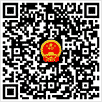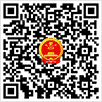Rules for the Implementation of the Patent Law of the People's Republic of China
Rules for the Implementation of the Patent Law of the People's Republic of China
(Promulgated by Decree No. 306 of the State Council of the People's Republic of China on June 15, 2001, and revised according to the Decision of the State Council on Amending the Rules for the Implementation of the Patent Law of the People's Republic of China promulgated on December 28, 2002)
Chapter I General Provisions
Article 1 These Rules are formulated in accordance with the Patent Law of the People's Republic of China (hereinafter referred to as the Patent Law).
Article 2 "Invention" in the Patent Law means any new technical solution relating to a product, a process or improvement thereof.
"Utility model" in the Patent Law means any new technical solution relating to the shape, the structure, or their combination, of a product, which is fit for practical use.
"Design" in the Patent Law means any new design of the shape, pattern or their combination, or the combination of the color with shape or pattern, of a product, which creates an aesthetic feeling and is fit for industrial application.
Article 3 Any formalities prescribed by the Patent Law and these Rules shall be gone through in a written form or in any other form prescribed by the patent administration department under the State Council.
Article 4 Any document submitted in accordance with the provisions of the Patent Law and these Rules shall be in Chinese; the standard scientific and technical terms shall be used if there is a prescribed one set forth by the State; where no generally accepted translation in Chinese can be found for a foreign name or scientific or technical term, the one in the original language shall be also indicated.
Where any certificate(s) or certifying document(s) submitted in accordance with the provisions of the Patent Law and these Rules is in a foreign language, the patent administration department under the State Council may, when it deems necessary, request a Chinese translation of the certificate(s) or the certifying document(s) be submitted within a specified time limit; where the translation is not submitted within the specified time limit, the certificate(s) or certifying document(s) shall be deemed not to have been submitted.
Article 5 Where any document is sent by mail to the patent administration department under the State Council, the date of mailing indicated by the postmark on the envelope shall be deemed to be the date of filing; where the date of mailing indicated by the postmark on the envelope is illegible, the date on which the patent administration department under the State Council receives the document shall be the date of filing, except where the date of mailing is proved by the party concerned.
Any document of the patent administration department under the State Council may be served by mail, by personal delivery or by other forms. Where any party concerned appoints a patent agency, the document shall be sent to the patent agency; where no patent agency is appointed, the document shall be sent to the liaison person named in the request.
Where any document is sent by mail by the patent administration department under the State Council, the 16th day from the date of mailing shall be presumed to be the date on which the party concerned receives the document(s).
Where any document is delivered personally in accordance with the provisions of the patent administration department under the State Council, the date of delivery is the date on which the party concerned receives the document(s).
Where the address of any document is not clear and it cannot be sent by mail, the document may be served by making an announcement. At the expiration of one month from the date of the announcement, the document shall be deemed to be served.
Article 6 The first day of any time limit prescribed in the Patent Law and these Rules shall not be counted in the time limit. Where the time limit is counted by year or by month, it shall expire on the corresponding day of the last month; if there is no corresponding day in that month, the time limit shall expire on the last day of that month; if a time limit expires on an official holiday, it shall expire on the first working day following that official holiday.
Article 7 Where a time limit prescribed in the Patent Law or these Rules or specified by the patent administration department under the State Council is not observed by a party concerned because of force majeure, resulting in loss of his or its rights, he or it may, within two months from the date on which the impediment is removed, at the latest within two years immediately following the expiration of that time limit, state the reasons, together with relevant supporting documents, and request the patent administration department under the State Council to restore his or its rights.
Where a time limit prescribed in the Patent Law or these Rules or specified by the patent administration department under the State Council is not observed by a party concerned because of any justified reason, resulting in loss of his or its rights, he or it may, within two months from the date of receipt of a notification from the patent administration department under the State Council, state the reasons and request the patent administration department under the State Council to restore his or its rights.
Where the party concerned makes a request for an extension of a time limit specified by the patent administration department under the State Council, he or it shall, before the time limit expires, state the reasons to the patent administration department under the State Council and go through the relevant formalities.
The provisions of paragraphs one and two of this Article shall not be applicable to the time limit referred to in Articles 24, 29, 42 and 62 of the Patent Law.









